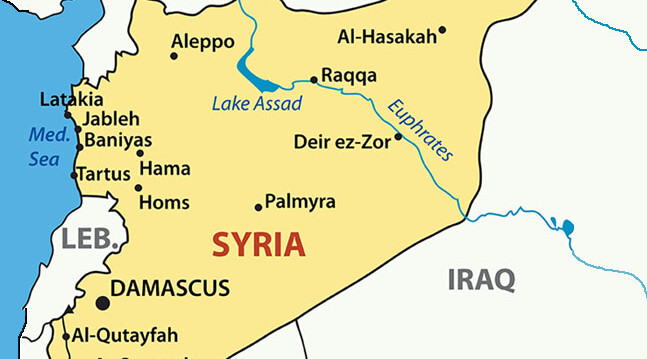This essay originally appeared on Opinio Juris, on August 31, 2013, and is republished here with kind permission. It was also posted on the blog of the Council's journal, Ethics and International Affairs.
The debate sparked by Syria's chemical weapons attack last week includes at least three separate controversies: 1) which (if any) international legal instruments govern Syria's use of chemical weapons; 2) whether outside military action against the Syrian regime violates international law; and 3) whether U.S. military intervention against the Assad regime is advisable in these circumstances. Each of these questions is complex. My recent op-ed in the New York Times contributed to conflating them. The question of whether the U.S. should use its military against Assad is separate from the questions of legal interpretation. The legal question does not address the likely consequences of the use of force.
No one can know for sure the outcome of military intervention in Syria. But the risks of making the situation worse are substantial. International outrage over Assad's use of chemical weapons should be channeled into escalating the political, diplomatic, and economic pressure on the regime and those that keep it in power.
It was taken for granted in most discussions after the Ghouta attack that Syria had violated international law. This is probably incorrect, but the answer depends on one's view of how customary law relates to treaty law. Among treaties, Syria is not a party to the Chemical Weapons Convention and its actions cannot be considered illegal under that treaty. It is a party to the Geneva Gas Protocol of 1925, which prohibits "the use in war of asphyxiating gases, poisonous and other gases." Whether this covers the Syrian regime's use of these weapons against its own people depends on whether the word "war" in the treaty includes internal as well as inter-state conflicts. The drafters of the 1945 Protocol most likely had in mind international war. Unless one were to make an argument for the more expansive version of the word, and as horrible as it sounds, one would have to conclude that Syria has accepted no treaty obligation that prohibits the use of chemical weapons domestically.
Customary law however may ban the use of chemical weapons. This has been raised in many arguments over Syria, and can be found in the ICRC's position and in a recent a post by Charli Carpenter. It also appears in the UK legal brief of August 29th 2013. Customary law involves a "general practice of states" that is accepted by them as legally binding. The almost universal support for the CWC convention (189 state parties) is strong evidence for this. But Syria's refusal to accept the treaty is presumably evidence that it contests that norm—and its practice certainly contradicts it. The dilemma at the heart of customary law is that it searches for a coherent narrative in a world that is full of contradictions.
This examination of chemical-weapons law does not exonerate Assad's atrocities, and it does not exempt his regime from legal condemnation under other treaties that he has signed, notably the Geneva Conventions (1949).
But even if Assad has violated it himself, there is nothing in chemical weapons law, including the CWC, to authorize the use of force in response to their use. The relevant treaties do not include enforcement powers, beyond referring matters to the Security Council. It is well known that the Charter forbids the use of force except as self-defense or as sanctioned by the UN Security Council. Everything else amounts to aggression and is illegal.
There is no provision in the Charter that provides for the enforcement of treaty obligations or for humanitarian need. This was vividly on display when Romeo Dallaire and the UNAMIR mission confronted legal obstacles to protecting people from the Rwandan genocide of 1994. The doctrine of the Responsibility to Protect has developed as a "norm" rather than a "law" (in part as a response to this genocide) precisely because it conflicts with the law of the Charter (at least insofar as R2P is used as justification by individual states rather than the Council itself).
Many countries have sought to differentiate between aggressive war and other kinds of unilateral, cross-border uses of force. India, for instance, justified its invasion of Goa in 1961 on the grounds of anti-colonialism. In the Times I suggested that "humanitarian intervention" without Council approval might sometimes be legally distinct from "aggression." This is highly contested, but it would not be the first time that the Charter has undergone substantive reinterpretation without a formal amendment. The UN Security Council treats an abstention by a permanent member as something other than a veto. This contradicts the plain language of the Charter, but it has ceased to be controversial.
Regardless of how one interprets international law on the use of force, however, these rules do not answer the question of whether intervention in any particular case is warranted. This is a question that law on its own cannot answer.
The U.S. has earned a reputation as a foreign-policy bully, and for sending its military and its money abroad to promote American economic and political interests at great expense to other states and societies. It imposes on others costs and constraints that it would never accept to have foisted upon it. It is no wonder that so many people protest whenever the U.S. government suggests that its military can be the "answer" to some "problem" in another country—we have heard this, and been horrified by the results, so many times before.
Despite what the title of my op-ed implies, there are numerous ways the U.S. could continue to try to limit Assad's capacity to harm his people that do not involve bombing Syria. Hathaway and Shapiro suggest some of the possibilities. Richard Falk has outlined clearly the risks, drawbacks, and dangers of a military response against Assad. The more considered response would be to intensify economic and diplomatic pressure on Assad and his supporters abroad.
My piece in the Times has been interpreted as an argument in favor of military action at any cost. This was not its intent. It is irresponsible to fold the question of how the U.S. and others should respond to the tragedy in Syria into legal discussions about which treaties apply to whom, when and where. My intention was to suggest that international law has changed such that it now encompasses the use of force on humanitarian grounds in certain extremely grave circumstances. An understanding of the history and politics of international law contributes to an informed debate over the international response to the Syrian crisis. But understanding the treaties, their limitations, and the politics surrounding their interpretation does not answer the question of how to respond. As Kenneth Anderson says, "It is not clear that any of the legal arguments—on any side—are adequate to address the real world stakes."




